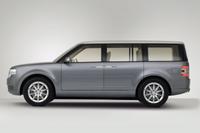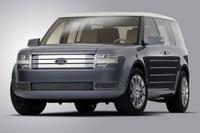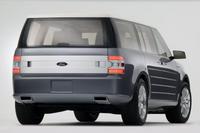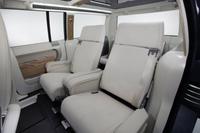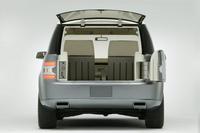New Look For "Minivans" From Ford?
DETROIT January 20, 2006; Poornima Gupta writing for Reuters reported that the Ford Motor Co. on Monday is likely to announce a new direction for its sluggish minivan line-up, a person familiar with the automaker's product plan said on Friday.
The No. 2 U.S. automaker will move away from the traditional minivan look, characterized by sliding doors and a truck platform, and pursue a design similar to the Fairlane concept wagon that it revealed at the Detroit auto show last year, the person said.
The vehicle had three rows of seats, was based on a car platform, and looked more like a larger station wagon. The automaker called the Fairlane a "people mover."
Ford, facing a deepening financial crisis, will announce a comprehensive restructuring plan on Monday that will include plant closings and layoffs, as well as present its fourth-quarter earnings.
Ford spokesman Jon Harmon declined to comment on changes to the minivan line-up but said the restructuring plan is more than just a cost-cutting strategy.
Ford's minivans compete in a crowded segment led by DaimlerChrysler AG's Chrysler Group. Sales of the Ford Freestar and Mercury Monterey were down 23 percent and 53 percent respectively in 2005.
Ford has announced that two new vehicles -- the new Ford Edge and Lincoln MKX crossover -- will be built in the Oakville, Ontario, plant, which currently makes the Freestar and Monterey minivans.
The details of Ford's restructuring plan -- dubbed "Way Forward" -- have been subject of much speculation, but various media reports suggest the automaker is likely to cut about 25,000 jobs in North America. Also, analysts expect the automaker to close about five assembly plants.
Mark Fields, president of Ford's operations in the Americas who has been charged with drafting the strategy, said earlier this month that the automaker is eyeing all aspects of its business on both cost and revenue sides.
"We are scrutinizing every cost, looking at our competitiveness on a material cost basis, looking at our competitiveness on a fixed cost basis and aligning that with the demand," Fields said.
Fields said reining in excess capacity is very important for Ford going forward.
Ford utilized only 79 percent of its total North American production capacity in 2005, the lowest capacity utilization by any automaker, according to Harbour Consulting.
Ford ended 2005 with a market share of 17.4 percent, the lowest level since the late 1920s.



